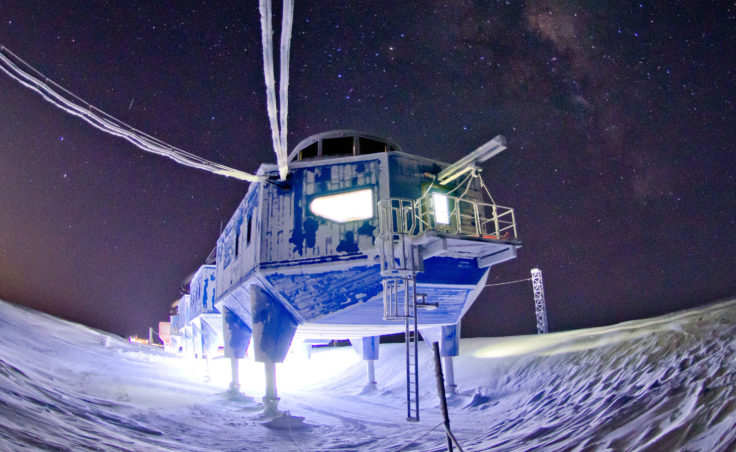A renowned contemporary architect is touring Alaska this week.
Hugh Broughton spoke at the Alaska Design Forum in Anchorage and will lecture in Juneau before giving the keynote address at the American Institute of Architects’ Polar Futures forum in Fairbanks on Friday.
He’s considered one of the world’s leading designers of research facilities in Polar regions.
Broughton and his UK-based team of architects just finished the space-age Halley VI for the British Antarctic Survey.
It was a challenging project. The ultramodern modular series of buildings sit atop the Brunt Ice Shelf which moves about 1,300 feet a year.
Broughton’s team designed a facility that can be relocated inland, climb above the area’s rising snow levels and minimizes environmental impact.
Now, he’s on a whirlwind tour of Alaska. He sat down to talk about the demands of building in some of the harshest climates on Earth and how those demands have changed with the climate.
Q: How long have you and your firm been doing this kind of work?
So we started in 2005 when the British Antarctic Survey organized a competition to find a designer for their Halley VI Antarctic Research Station. Actually at that point the largest building we had designed as a practice, was a 1,600 square foot building for Girl Guides in the center of London. But, I never let on about that until after we’d finished the Antarctic Research Station.
Q: What made you guys decide to jump into — I mean that’s an extreme project — what made you think, I can do this?
I have just always loved the natural world. And I thought to myself, well I probably don’t stand much of a chance winning but it had the promise of some fantastic photographs of penguins and ice and I just thought, I’ll go along just for those.
Q: Can you talk about the technical hurdles of building in polar and Arctic regions?
Each situation is quite particular. As it happens the British base is in a very dynamic location. Because it’s on what’s called a floating ice shelf which is where the ice has flowed off the main continent of Antarctica and is actually supported on in this case the Weddell Sea underneath.
And the ice is moving at quite some speed, it’s around 1,500 foot per annum. It was even faster. The ice is around 500 feet thick and every now and then it breaks off as a giant iceberg.
Of course, after that, it’s very cold. I guess you wouldn’t necessarily think it that cold here but it’s at least -50. It’s very windy. There’s winds in excess of 150 miles an hour. And every winter the sea ice freezes to up to 600 miles out from the coast of the Antarctic so it’s very isolated as well.
Q: How has climate change influenced your designs?
I think one of the things I’ve learned about the process of working on designs for polar research stations is issues related to global warming are incredibly complex and rely on changes to do with weather systems, sea currents and so on.
So interestingly, for example in the east Antarctic, you might see temperatures fairly stable and in some cases getting colder. Whereas in the west Antarctic and the Antarctic Peninsula temperatures are rising at a scary rate.
Unfortunately, you then go to the Spanish base. And you can see there when we were digging for example the foundations. Remember we’re in Antarctica here, but no permafrost.
Similarly we find in the water production for that Spanish base that you’re having to be much more diverse in the ways in which you can get water for the residents. And I think it’s particularly in areas like water production that small communities in cold and remote places are going to see significant change taking place.
Broughton said his team is interested in building in extreme environments all over the world. He says many of the sustainable design principals they’ve used in polar facilities can be applied in other smaller communities or in urban areas.


